Imagine yourself effortlessly gliding through water, graceful and free. That’s the essence of Matsyasana, or Fish Pose, a yoga asana that invites you to explore the depths of your flexibility and inner strength. It’s more than just a physical stretch; it’s a journey of self-discovery, resilience, and embracing surrender.
So, are you ready to dive into the world of Matsyasana? This comprehensive guide will take you step-by-step through the pose, from preparation and alignment to breathing techniques and modifications. We’ll even explore the symbolism behind the pose and the science behind its remarkable benefits.
What is Matsyasana?
Imagine yourself basking in the sun, floating effortlessly on the surface of a tranquil lake. That’s the essence of Matsyasana – a gentle backbend that evokes the freedom and resilience of a fish. Derived from the Sanskrit words “Matsya” (fish) and “Asana” (posture), this pose invites you to embrace an expansive openness, both physically and mentally.
Exploring the Benefits of Matsyasana
Physical Rejuvenation
Think of your body as a garden blooming with newfound vitality. Matsyasana gently opens your chest, throat, and abdomen, creating space for deep breaths and improved circulation. This translates to:
- Enhanced chest and shoulder flexibility: Picture your heart expanding like a blossoming flower. The backbend in Matsyasana stretches the intercostal muscles between your ribs, allowing your lungs to take in more oxygen with each breath. This not only improves posture but also boosts energy levels and leaves you feeling invigorated.
- Reduced tight neck and throat: Say goodbye to tension and tightness! The gentle stretch in Matsyasana releases tension in the neck and throat muscles, alleviating headaches and improving vocal expression. This newfound openness also creates space for deeper breaths, further enhancing relaxation.
- Stimulated abdominal organs: Feeling sluggish? The gentle compression in Matsyasana massages and stimulates the internal organs, aiding digestion and improving overall abdominal health.
Mental Serenity
As the physical knots loosen, so too do the mental ones. Matsyasana’s calming effects weave a tapestry of:
- Reduced stress and anxiety: Picture your worries melting away like snowflakes on a warm day. The backbend in Matsyasana stimulates the vagus nerve, responsible for the parasympathetic nervous system, promoting relaxation and calming the mind. This newfound peace helps you navigate the challenges of daily life with greater composure.
- Enhanced clarity and focus: Imagine your mind becoming a serene lake reflecting the clear sky. The deep breathing encouraged by Matsyasana increases oxygen flow to the brain, boosting concentration and improving cognitive function. This newfound focus allows you to approach your tasks with greater efficiency and purpose.
Emotional Empowerment
As you conquer the physical and mental challenges of Matsyasana, your emotional landscape flourishes with:
- Increased confidence and self-acceptance: Celebrate your inner strength! Mastering Matsyasana is a testament to your personal determination and resilience. This accomplishment fosters a sense of confidence in your abilities and a deeper appreciation for your body’s incredible potential.
- Empowered resilience: Imagine weathering life’s storms with equanimity. The act of surrendering to the backbend in Matsyasana teaches you to let go of control and embrace the flow of life. This newfound resilience allows you to bounce back from challenges with greater adaptability and inner strength.
Spiritual Connection
Beyond the physical and emotional realms, Matsyasana invites you to embark on a spiritual journey:
- Enhanced surrender and awareness: Step into a state of mindful presence. The open and receptive posture of Matsyasana encourages surrender to the present moment, fostering a deeper awareness of your breath, body, and surroundings. This state of mindful connection opens the door to spiritual exploration and self-discovery.
- Connection to something larger than oneself: Feel the interconnectedness of life. The open throat chakra stimulated by Matsyasana invites a sense of unity with the world around you, fostering a connection to something larger than yourself. This feeling of oneness transcends the limitations of the ego and cultivates a sense of peace and belonging.
A Step-by-Step Guide to Mastering Matsyasana (Fish Pose)
Setting the Stage for Harmony
Before embarking on your journey, cultivate an environment conducive to inner peace and focus:
- Find a Tranquil Space: Seek a haven free from distractions. Whether it’s your yoga studio, a quiet corner of your home, or a lush natural setting, surround yourself with serenity.
- Unroll Your Supportive Sanctuary: Choose a yoga mat that offers comfort and stability. A thicker mat can provide extra cushioning for your knees and back during the pose.
- Embrace Stillness: Begin with a few moments of mindful breathing. Sit comfortably and close your eyes, drawing your attention inward and quieting your mind.
Aligning for a Safe and Effective Practice
With a calm and focused mind, prepare your body for the pose:
- Begin in Sukhasana (Easy Pose): Sit cross-legged with your spine erect and your hands resting gently on your knees. Breathe deeply and connect with your inner stillness.
- Gently Recline: Lie down on your back with your knees bent and feet flat on the floor. Place your arms beside your body, palms facing downwards.
- Neutral Spine: Ensure your spine maintains a neutral position, avoiding excessive arching or rounding in the lower back. Imagine a gentle wave flowing naturally along your spine.
- Hand Positioning: Slide your hands beneath your hips, fingers pointing towards your feet. Press your palms firmly into the mat to create a stable foundation.
Ascend into the Pose
Now, it’s time to awaken the inner fish:
- Press and Lift: Engage your core muscles and press firmly into your forearms. Slowly lift your chest off the mat, drawing your shoulder blades together and down your back.
- Open Your Heart: Gently arch your back without straining, creating a graceful backbend. Imagine your chest expanding like a blossoming flower, opening towards the sky.
- Head Lowering: Allow your head to gently come down towards the floor, keeping your neck long and relaxed. Do not force your head down; let it rest comfortably on the floor or a block for support if needed.
Breathe Life into the Pose
Remember, breath is the bridge between your physical body and your mind. In Matsyasana, it becomes the anchor for your focus and a source of inner strength:
- Deep Inhalation: As you ascend into the pose, inhale deeply, filling your lungs with air and expanding your chest further. Feel the energizing flow of prana (life force) coursing through your body.
- Exhale with Release: With each exhalation, gently release any tension or tightness you may hold in your chest, back, or neck. Imagine exhaling all worries and anxieties, leaving space for calmness and clarity.
- Steady and Connected: Maintain a steady and rhythmic breath throughout the pose. Focus on the inhale filling your belly and the exhale releasing tension. This mindful breath connection will deepen your practice and enhance your experience.
Tips for Beginners in Matsyasana (Fish Pose)
Comfort First, Challenge Later
Your neck and back are your gateway to a blissful backbend. If they feel tight or uncomfortable, modifications are your best friend. Here are a few options:
- Neck Support: Place a folded blanket or small yoga block under your head for gentle cushioning. (Image of head position on a block in Matsyasana)
- Shoulder Release: If your shoulders feel pinched, try placing your hands slightly in front of your hips, fingers pointing towards your knees. (Image of hand position in front of hips in Matsyasana)
- Bent Knees: Release the pressure on your lower back by bending your knees and placing your feet flat on the floor. (Image of Matsyasana with knees bent)
Remember, it’s okay to modify until you build the necessary flexibility. Listen to your body and prioritize comfort over achieving the “perfect” pose.
Prop Up Your Practice
Props are your allies in the quest for a safe and supported Fish Pose. Here are some helpful tools:
- Blocks: Place blocks under your hands or elbows to deepen the backbend gradually while protecting your wrists. (Image of Matsyasana with blocks under elbows)
- Bolster: A bolster under your upper back can provide additional support and open your chest more comfortably. (Image of Matsyasana with bolster under upper back)
- Straps: If reaching your hands to your hips is challenging, use a yoga strap looped around your ankles and held in your hands for leverage. (Image of Matsyasana with strap around ankles)
Experiment with different props to find the combination that works best for your body. Their gentle assistance can make a world of difference in your practice.
Enter and Exit with Grace
Transitioning in and out of Matsyasana safely is key to avoiding injury. Here’s how to do it like a pro:
- Entering: Start lying on your back in Savasana (Corpse Pose). Bend your knees and place your feet flat on the floor. Slide your hands under your hips, palms facing down. Engage your core and press your forearms into the mat as you gently lift your chest and arch your back.
- Exiting: Slowly lower your back to the mat, one vertebra at a time. Release your hands from under your hips and straighten your legs. Rest in Savasana for a few breaths before moving on.
Remember to move slowly and deliberately throughout the transitions. Listen to your body and don’t force any movements that feel uncomfortable.
Avoiding Common Mistakes in Matsyasana (Fish Pose)
Overarching the Back
The temptation to push yourself deeper into the backbend is understandable, but exceeding your natural flexibility can lead to strain and injury. Remember, slow and steady wins the race! Here’s how to avoid overextending your back:
- Listen to your body: If you feel any sharp pain or discomfort, gently come out of the pose and rest. Pushing through pain is never the answer.
- Focus on the stretch, not the depth: The goal is to gently open your chest and throat, not to impress anyone with your acrobatic feats.
- Engage your core: A strong core provides stability and prevents your back from over-arching. Imagine your core drawing your navel towards your spine as you lift your chest.
- Modify as needed: Don’t hesitate to bend your knees, use blocks under your hands, or place a bolster under your upper back for additional support.
Straining the Neck
Your neck is a delicate bridge between your head and your torso, and forcing it into an unnatural position can lead to tension and pain. Here’s how to keep your neck happy and relaxed in Matsyasana:
- Maintain a natural curve: Avoid tucking your chin towards your chest or straining to look up. Instead, let your head gently fall back, keeping your neck long and relaxed.
- Use a block or blanket: Place a folded blanket or small yoga block under your head for extra cushioning and support.
- Don’t force the gaze: There’s no need to fix your eyes on any specific point. Let your gaze soften and fall naturally.
Holding the Breath
Yoga and breath are intertwined like branches in a forest. Holding your breath during Matsyasana deprives your body of vital oxygen and can lead to dizziness and headaches. Here’s how to keep the breath flowing freely:
- Connect to your breath: Before entering the pose, take a few deep, cleansing breaths to establish a steady rhythm.
- Inhale to expand, exhale to release: As you lift your chest, inhale deeply, feeling your lungs fill with air. Then, as you relax into the pose, exhale fully, releasing any tension.
- Maintain a steady rhythm: Don’t let your breath become shallow or erratic. Focus on smooth, rhythmic inhalations and exhalations throughout the pose.
Remember, your breath is your anchor. By staying connected to it, you’ll navigate the currents of Matsyasana with ease and grace, emerging from the pose feeling refreshed and revitalized.
Exploring Variations of Matsyasana (Fish Pose)
Supported Fish Pose
For those just setting sail on the journey of Matsyasana, supported variations offer a comfortable and confidence-boosting entry point. Here are two delightful options:
- Blocks as Your Buoy: Place one or two blocks under your hands or elbows to gently lift your chest and arch your back. This reduces strain on your shoulders and back, allowing you to ease into the pose gradually.
- Bolster as Your Nest: Cradle your upper back on a bolster for a luxurious and deeply supported backbend. This is especially helpful for those with tight backs or neck concerns.
Remember, supported variations are not a sign of weakness; they’re tools to explore the pose safely and build the foundation for deeper practice.
Half Fish Pose
For those seeking a playful and accessible variation, Half Fish Pose offers a delightful alternative. Here’s how to navigate its calm waters:
- Lie Down and Anchor: Begin in Savasana (Corpse Pose). Bend your knees and place your feet flat on the floor.
- Lift and Arch: Engage your core and press your forearms into the mat as you gently lift your chest and head off the mat. Let your back arch naturally.
- Embrace the Bend: Keep your knees bent and focus on opening your chest and throat. Imagine your heart blossoming like a sun-kissed flower.
- Release and Rest: When ready, slowly lower your back and head back to the mat, one vertebra at a time. Rest in Savasana for a few deep breaths.
Half Fish Pose offers a gentle stretch for your chest, throat, and abdomen, making it a perfect gateway for beginners or those with limited flexibility.
Advanced Fish Pose
For experienced yogis seeking to take their practice to new depths, Advanced Fish Pose beckons with its captivating challenge. Here’s how to prepare for your deep dive:
- Master the Basics: Ensure you’re comfortable with the standard Matsyasana before venturing into the advanced variation.
- Cross Your Legs: While lying on your back, cross your legs in Padmasana (Lotus Pose) or Sukhasana (Easy Pose).
- Extend and Arch: Engage your core and press into your forearms as you lift your chest and head off the mat, arching your back gracefully.
- Maintain Balance: Focus on balancing your weight evenly on your crossed legs as you deepen the backbend.
- Breathe and Surrender: Remember to connect with your breath throughout the pose, keeping it steady and rhythmic. Allow yourself to surrender to the gentle flow of the pose.
So, unleash your inner fish! Let Matsyasana guide you towards a more open, resilient, and peaceful you. Dive in, embrace the flow, and enjoy the transformative power of this enchanting pose. Hopefully, the above article of TTC has provided you with useful information. If you have any questions or concerns, please leave a comment below.
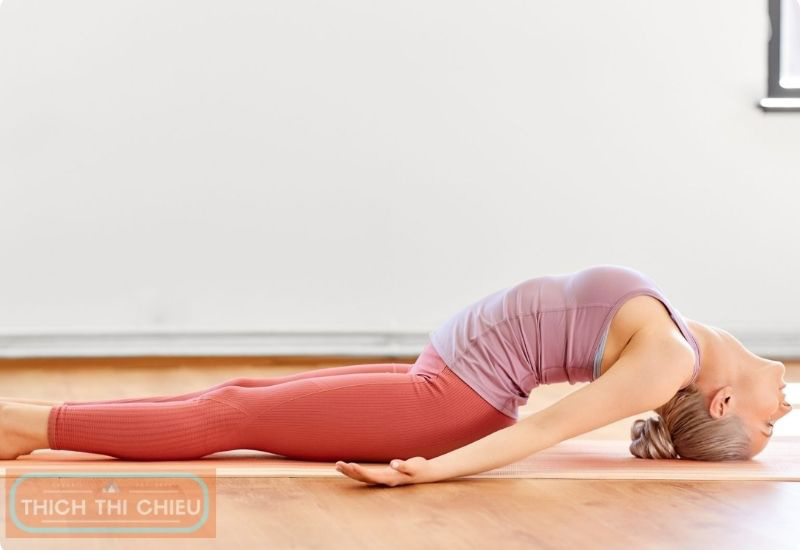
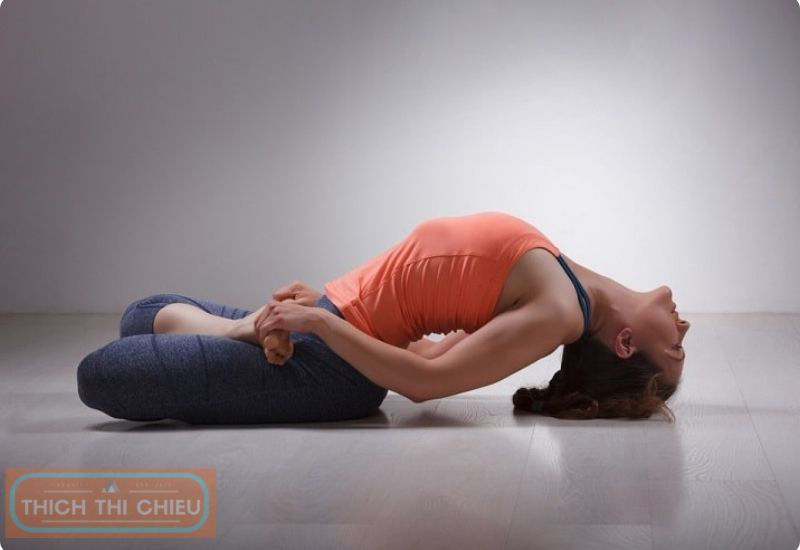
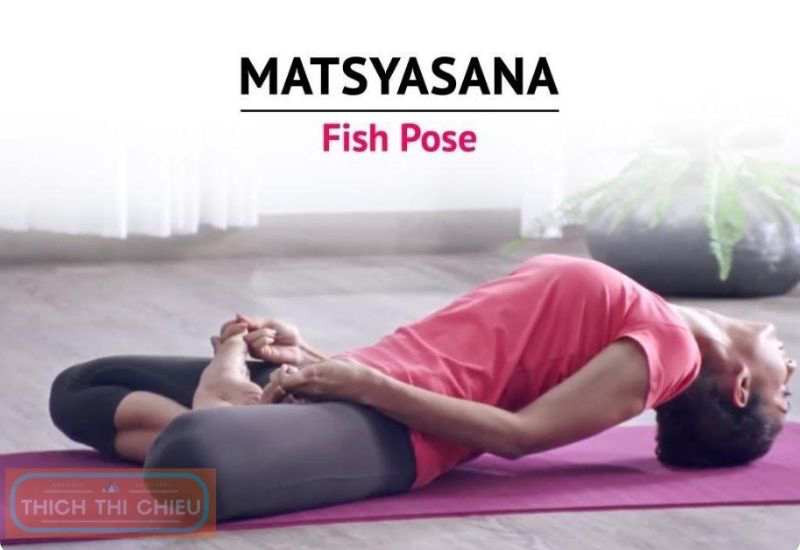
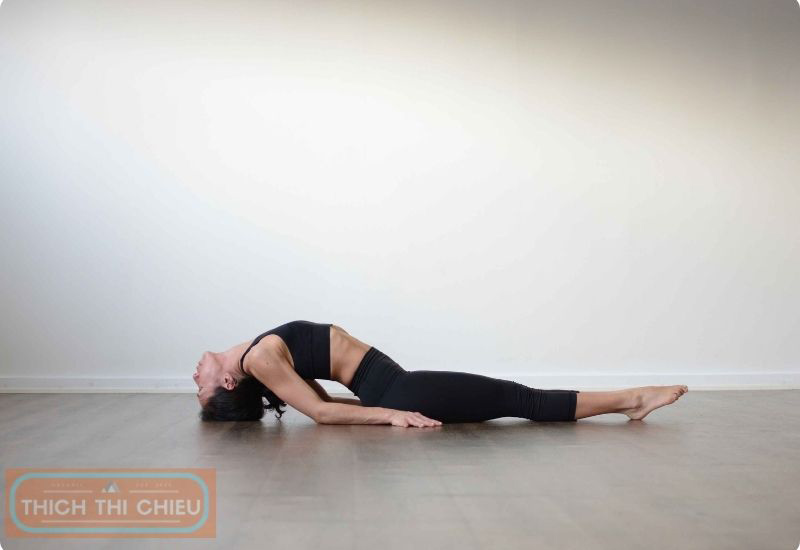
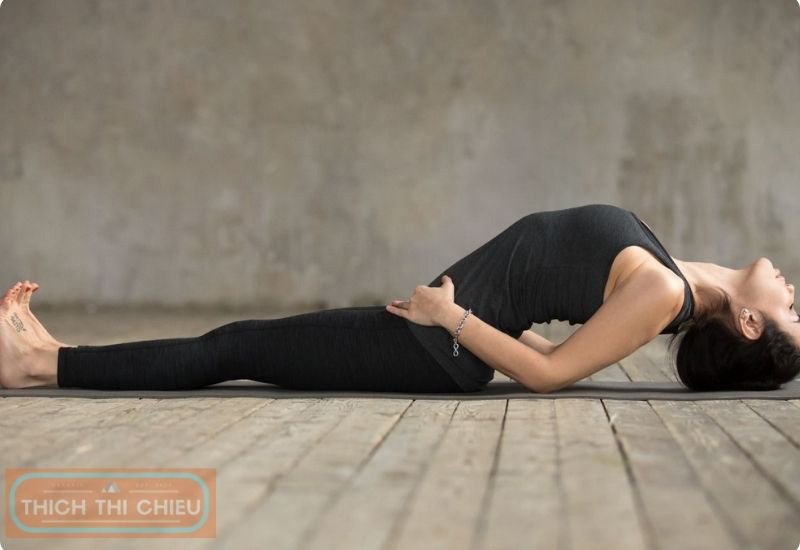
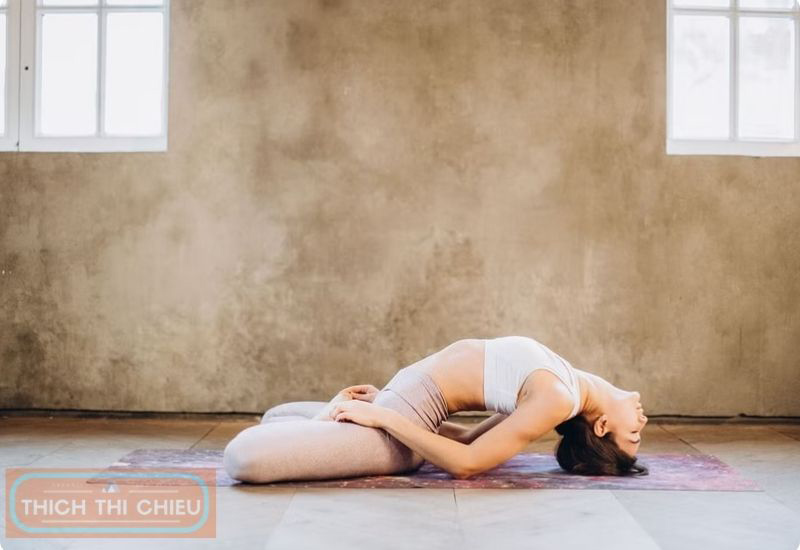
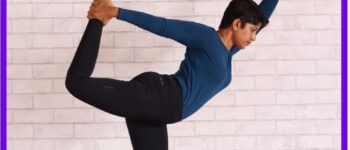




Leave a Reply